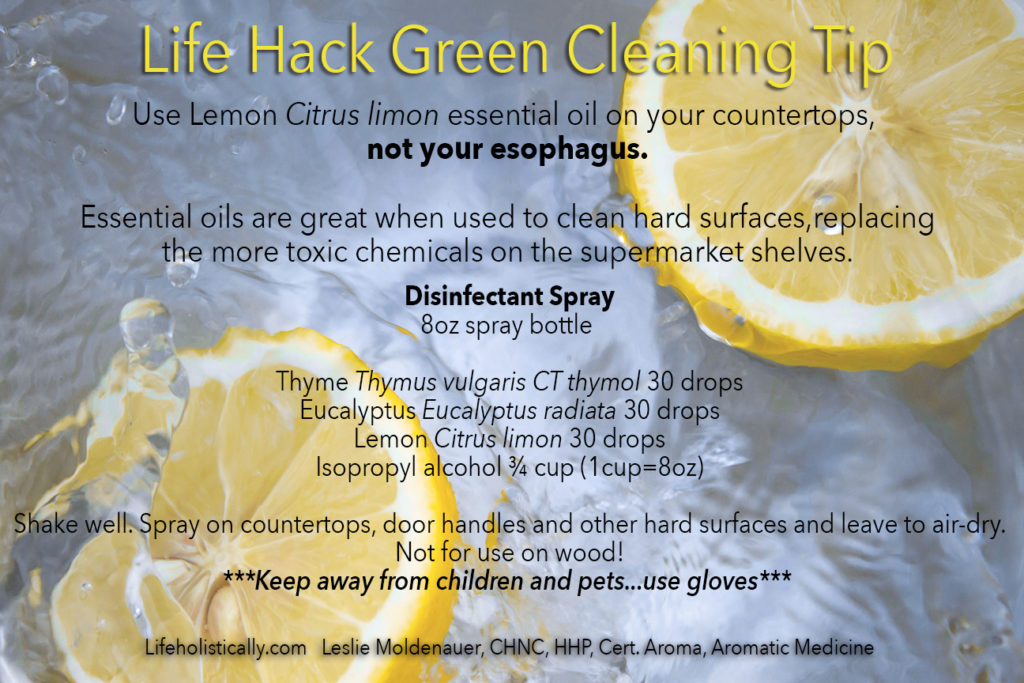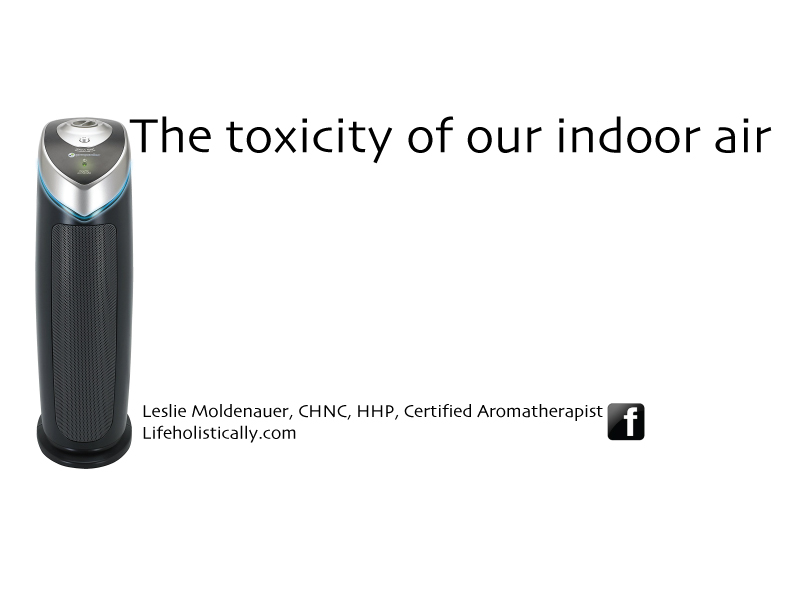Our respiratory system begins with the nose, travels all the way down to the lungs, and has a very important job. The lungs take in oxygen, to…well keep us alive. The respiratory tract also warms and moistens the air we breathe, as well as removes airborne particles. The lungs are one of the organs of our amazing body that provide us with detoxification, and we really take them for granted. Why would I say this?
The quality of the air we breathe is critical to our health. According to the Environmental Protection Agency, “indoor air pollutants were generally 2 to 5 times greater than outdoor pollution levels. In some cases, indoor air pollution was 100x greater than outdoor levels!” (1) How can this be!
Chemicals are to blame. VOC’s or Volatile Organic Compounds are present in many things in the home such as furniture, carpeting, paint, varnish, cleaning products, cosmetics and more (2). VOC’s are a big problem, but by far not the only one worth mentioning. The range of indoor air pollutants include phthalates, mold, pollen, pet dander, radon, and more. All of these indoor pollutants keep the lungs working very hard, but this really puts them, and you at risk for respiratory distress or worse over time. Those most at risk are infants, children, elderly, and those that are immune-compromised. These indoor pollutants are definitely an issue for those that already suffer from asthma or other respiratory complications (3).
There are some things that we can do to improve the quality of the air we breathe and maintain good health of our respiratory system. The first step is to always ensure adequate ventilation in your home. This can be more difficult in the winter months. A big helper to absorb some of these toxic chemicals is houseplants.
If you have pets or small children in the home, be sure the plants you purchase are not toxic to them if eaten. Follow this link to learn more about plants for the home.
Get yourself a good quality HEPA air filter. This will remove pollutants from the air such as pet danger, dust mites, pollen, and smoke. Depending on the side of the unit, they can cover a wide range of square feet, and work very well to remove indoor pollutants. There are many options, this is the one that I use-Germ Guardian. Here is a nice table top version-Germ Guardian Table Top.
When dusting furniture or cleaning floors in the home, be sure to use a damp cloth to capture the particulates instead of sending them back into the air. When cleaning, be sure to use green products that clean without sending additional chemicals into the air. Essential oil users know that oils can go a long way to clean the home, but if you have babies or cats, for example, you must use extra caution with the oils you are choosing. Utilizing strong anti-germs blends is not going to be the best choice here.

Removing the sources of air contaminants can be a bit more challenging as it can be expensive to remove them all. Try to buy organic furniture not treated with chemicals. Carpet emits many VOC’s; wood is a better option. Plastic and vinyl such as with your shower curtain emit many chemicals. This is a great alternative to the strong off-gassing vinyl shower curtain. Avoid buying mattresses, bedding and pajamas sprayed with toxic flame retardants for your young children. Organic cotton is a good (not perfect) replacement. Lastly, be sure to avoid synthetic air fresheners or wax warmers, burning candles and synthetic fragrances as they can really irritate the lungs, especially for those that are asthmatic or are otherwise immune-compromised. A good rule of thumb is if the scent is not found in nature, question if you should be emitting the scent and all that comes with it throughout your home.
The topic of indoor pollution can be overwhelming, but there are many things that you can do to improve the quality of the air you breathe. By far the best of all is to be sure to get outside and get plenty of fresh air as much as you can. Your lungs will thank you.
Please note that I am not a medical practitioner. The content of this website is provided for general informational purposes only and is not intended as, nor should it be considered a substitute for, professional medical advice. Do not use the information on this website for diagnosing or treating any medical or health condition. If you have or suspect you have a medical problem, promptly contact your professional healthcare provider. By using this website, you assume full responsibility and liability for your own actions.
References
(1) (3) Why indoor air is important to schools, Retrieved from
https://www.epa.gov/iaq-schools/why-indoor-air-quality-important-school
(2) Volatile Organic Compounds’ Impact on Indoor Air Quality, Retrieved from
https://www.epa.gov/indoor-air-quality-iaq/volatile-organic-compounds-impact-indoor-air-quality
Additional Resources
Group, E. (2014) 10 shocking facts about indoor air quality. Retrieved from:
http://www.globalhealingcenter.com/natural-health/10-shocking-facts-indoor-air-quality-iaq/
Protect indoor air quality in your home (2014). Environmental protection agency. Retrieved from: http://www2.epa.gov/indoor-air-quality-iaq/protect-indoor-air-quality-your-home





